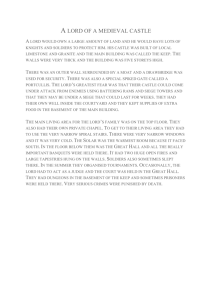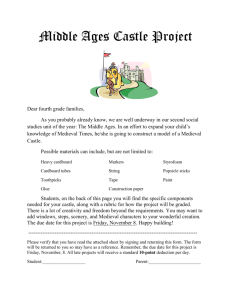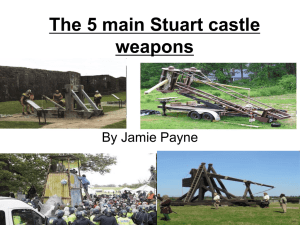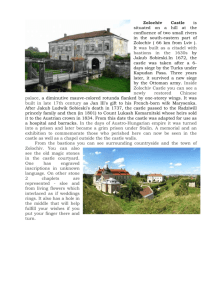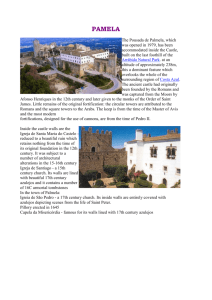What is a Ballista
advertisement
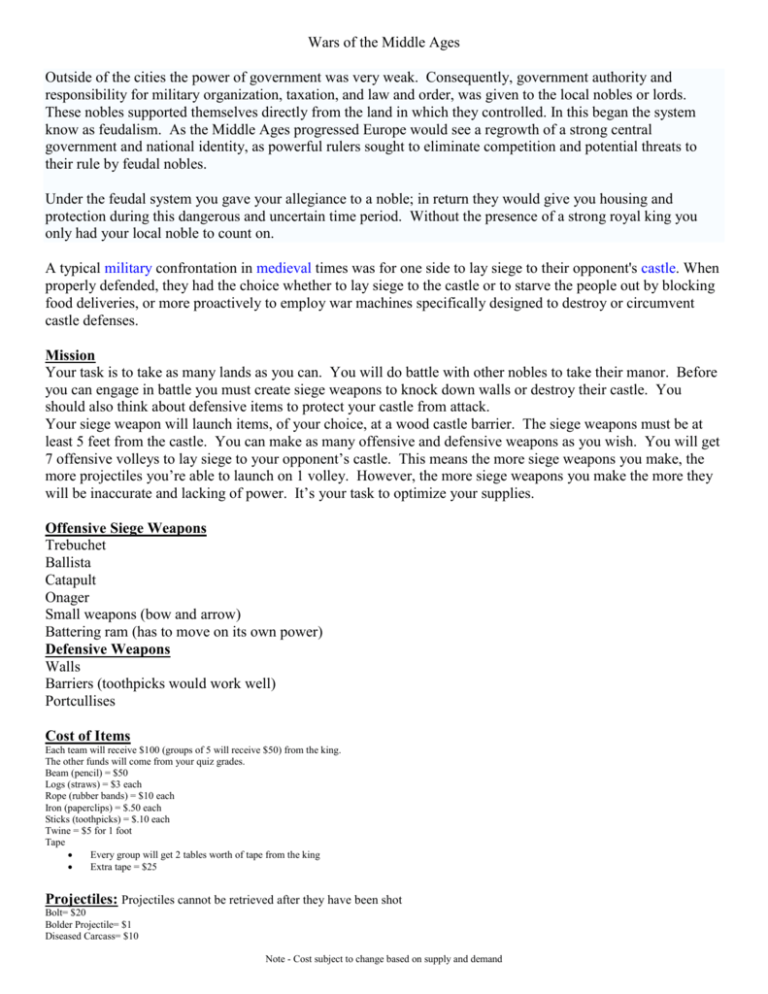
Wars of the Middle Ages Outside of the cities the power of government was very weak. Consequently, government authority and responsibility for military organization, taxation, and law and order, was given to the local nobles or lords. These nobles supported themselves directly from the land in which they controlled. In this began the system know as feudalism. As the Middle Ages progressed Europe would see a regrowth of a strong central government and national identity, as powerful rulers sought to eliminate competition and potential threats to their rule by feudal nobles. Under the feudal system you gave your allegiance to a noble; in return they would give you housing and protection during this dangerous and uncertain time period. Without the presence of a strong royal king you only had your local noble to count on. A typical military confrontation in medieval times was for one side to lay siege to their opponent's castle. When properly defended, they had the choice whether to lay siege to the castle or to starve the people out by blocking food deliveries, or more proactively to employ war machines specifically designed to destroy or circumvent castle defenses. Mission Your task is to take as many lands as you can. You will do battle with other nobles to take their manor. Before you can engage in battle you must create siege weapons to knock down walls or destroy their castle. You should also think about defensive items to protect your castle from attack. Your siege weapon will launch items, of your choice, at a wood castle barrier. The siege weapons must be at least 5 feet from the castle. You can make as many offensive and defensive weapons as you wish. You will get 7 offensive volleys to lay siege to your opponent’s castle. This means the more siege weapons you make, the more projectiles you’re able to launch on 1 volley. However, the more siege weapons you make the more they will be inaccurate and lacking of power. It’s your task to optimize your supplies. Offensive Siege Weapons Trebuchet Ballista Catapult Onager Small weapons (bow and arrow) Battering ram (has to move on its own power) Defensive Weapons Walls Barriers (toothpicks would work well) Portcullises Cost of Items Each team will receive $100 (groups of 5 will receive $50) from the king. The other funds will come from your quiz grades. Beam (pencil) = $50 Logs (straws) = $3 each Rope (rubber bands) = $10 each Iron (paperclips) = $.50 each Sticks (toothpicks) = $.10 each Twine = $5 for 1 foot Tape Every group will get 2 tables worth of tape from the king Extra tape = $25 Projectiles: Projectiles cannot be retrieved after they have been shot Bolt= $20 Bolder Projectile= $1 Diseased Carcass= $10 Note - Cost subject to change based on supply and demand Trebuchet A trebuchet is moved by a counterweight. The axle of the arm is near the top of a high strutted vertical frame. The shorter arm of the balance carries the counterweight and the longer arm carries the sling that carries the shot. The trebuchet is thought to have been invented in China between the 5th and 3rd centuries BC, and reached Europe around 500 AD. Ballista The ballista is a powerful weapon resembling a giant crossbow, to eject heavy darts singly or in groups. It is also sometimes referred to as a bolt thrower. Roman ballistae fired large stones, rather than bolts. Ballistae in the Middle Ages launched bolts, and were thought to have inspired the European crossbow, though 5th century Chinese crossbows may have also been a factor in the development of those weapons and bolt-throwing ballistae. Catapult Catapults, or mangonels, shot heavy projectiles from a bowl-shaped bucket at the end of the arm. In combat, mangonels hurled rocks, burning objects (or vessels filled with flammable materials which created a fireball on impact), or anything else readily available to the attacking force. One of the more unusual types of projectile was that of dead, and often partially decomposed, carcasses of animals or people. These were used to intimidate the defending force, lower their morale, and often to spread disease amongst the besieged. This tactic often proved effective as the short supply of food, which was often of low quality or rotting, combined with the cramped living space of the defenders, poor hygiene, and infestations of vermin (which made convenient vectors for disease) made the ideal scenario for the spread of disease. Onager The onager was a post-classical Roman siege engine, which derived its name from the kicking action of the machine, similar to that of an onager (wild ass). It is a type of catapult that uses torsional pressure, generally from twisted rope, to store energy for the shot. Portcullis A portcullis is a grille or gate made of wood, metal or a combination of the two. Portcullises fortified the entrances to many medieval castles, acting as a last line of defence during time of attack or siege. Each portcullis was mounted in vertical grooves in castle walls and could be raised or lowered quickly by means of chains or ropes attached to an internal winch. There would often be two portcullises to the main entrance. The one closest to the inside would be closed first and then the one furthest away. This was used to trap the enemy and often, burning wood or hot oil would be poured onto them from the roof. Also, archers could shoot arrows at the trapped enemies. Walls At first castle walls were wooden, making them cheap and quick to build, but they were vulnerable to arson. Stone walls followed, and with each generation they grew thicker and taller. From the mid-13th century, many castles had concentric rings of walls, one encircling the other. Caerphilly Castle is the earliest example of this in Britain, and the largest castle ever built in Wales. Low outer walls served as barriers against siege towers and battering rams. If attackers managed to break through this outer ring of defense, castle defenders could retreat behind high inner walls. Corner towers stood out from the walls, giving defenders a better perspective on enemy movements. Windows were rare; instead, slits called loopholes were built for archers. Sometimes builders thickened walls low to the ground to protect them from battering rams. Often, these walls sloped away at the base to redirect objects dropped from the top of the castle wall, ricocheting them out at soldiers on the ground. Because they had walls to protect them, castle defenders would sometimes hunker down and try to wait out their attackers. Those inside made sure they could be self-sufficient when cut off from the outside world by a siege. They built wells and kept livestock inside their walls, guaranteeing fresh water and fresh meat during a siege. They also salted foods such as bacon and fish and stored grains and beans by the barrel-full. Castle garrisons also stockpiled weapons, for reinforcements often could not get through. If a siege continued into winter, castle dwellers had more protection from the elements than attackers, and if their rations held up, also more food to sustain them. Those besieged inside a castle often negotiated time frames for surrender with the enemy. For example, a castle garrison might tell an attacking army that they would surrender if reinforcements did not appear by a specified date. This would save lives on both sides and avoid the steep financial costs of a siege as well.

